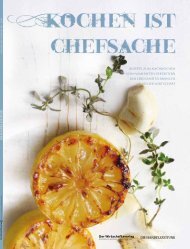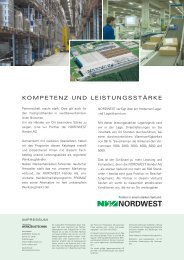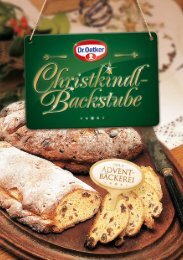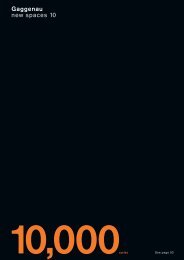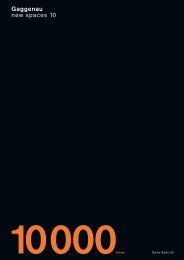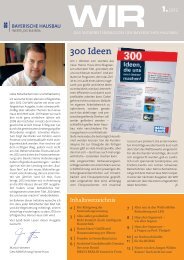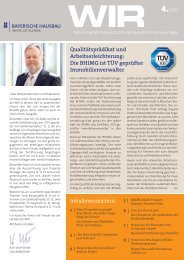new_spaces_07_GB
You also want an ePaper? Increase the reach of your titles
YUMPU automatically turns print PDFs into web optimized ePapers that Google loves.
38 Sights and Scenes<br />
of trees. Ever since the 1960s, Singapore’s<br />
bureaucrats have been looking for<br />
suitable plants all over the world.<br />
Kay Ngee Tan’s projects always begin<br />
with two rituals. When he thinks he has<br />
intuitively grasped the character of a<br />
building, he draws imaginary pictures of<br />
it with a coloured pencil on loose sheets<br />
of paper. “I always use this two-coloured<br />
pencil, which is blue on one side and red<br />
on the other. This lets me express two<br />
aspects of the building at the same time,”<br />
he says. And as though the survival of his<br />
creativity depended on these coloured<br />
Façade technology<br />
The residential buildings<br />
in Taipei’s Hu linduan<br />
quarter show similarities to<br />
computer circuits and<br />
an aerial view of the city.<br />
pencils, he uses only the best kind, which<br />
he has fl own in from a renowned<br />
stationery shop in Tokyo. The second<br />
ritual is a period of months during which<br />
he and his 12-person team in Singapore<br />
research the planned construction site’s<br />
history. “This creates trust between the<br />
client, the architect, the local people, and<br />
of course the people who will move into<br />
the fi nished building,” he explains. The<br />
results of this research into the site’s past<br />
fl ows into the architectural design, and<br />
the building can then be smoothly<br />
integrated into its surroundings. The team<br />
also uses programs such as “Google<br />
Earth” for its historical research. Once<br />
when Tan was preparing to create a <strong>new</strong><br />
façade for a building complex in Taipei,<br />
the capital of Taiwan, he noticed that the<br />
aerial photographs of the city that he was<br />
using in his research revealed construction<br />
patterns that resembled computer<br />
circuitry. Tan fi ltered out these patterns<br />
and integrated them into his design. For<br />
villas along a lake in Hangzhou, south of<br />
Shanghai — a region known for its<br />
mystical bamboo forests — the architect<br />
used the ringed pattern of bamboo<br />
trunks. He also created pedestrian bridges<br />
similar to those seen in paintings made<br />
in the 13th century by the artist Huang<br />
Gongwang, who used to live there.<br />
So it’s no wonder that the <strong>new</strong> bread factory<br />
Tan recently designed in Singapore,<br />
which is called “BreadTalk”, resembles a<br />
pile of baked goods. During his student<br />
years in London, Tan’s special fi eld of<br />
interest was “the language of originality”.<br />
Today he still regards it as the foundation<br />
of every successful design. If he’s not<br />
sure what he thinks about a certain issue,<br />
he sits down and writes a book, and in<br />
some years he writes several. One of<br />
them was Magnetic Fields of Cities,<br />
which received an award in Singapore as<br />
one of the ten best works on architecture.<br />
In this book and elsewhere, Kay Ngee Tan<br />
deals with buildings and their infl uence<br />
on their immediate surroundings.<br />
“Singapore is a society governed by<br />
certain rules, but that doesn’t mean<br />
Singapore as a whole is ‘square’,” Tan<br />
says. “There’s an incredibly exciting<br />
subculture here which dares to address<br />
controversial issues such as the problems<br />
faced by minorities, compulsory military<br />
service or freedom of the press. This is<br />
possible in the small experimental theatres<br />
that evolved from the tradition of<br />
Chinese drama. I often create the stage<br />
designs for these plays. It’s true that<br />
these events are attended by fewer than<br />
200 people, but they have an impact on<br />
our city’s cultural life,” says Tan with a<br />
smile. “Just 200 people — imagine how<br />
much they can accomplish in Singapore.”<br />
www.kayngeetanarchitects.com



